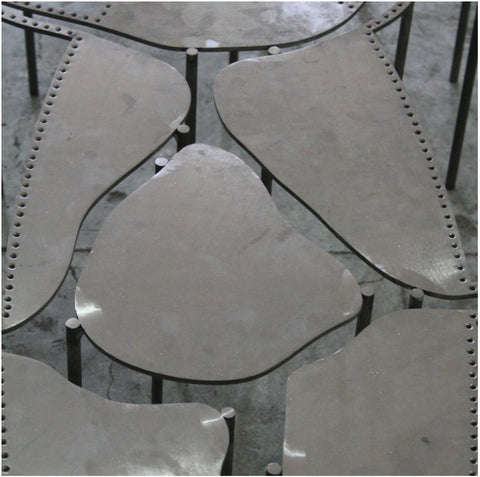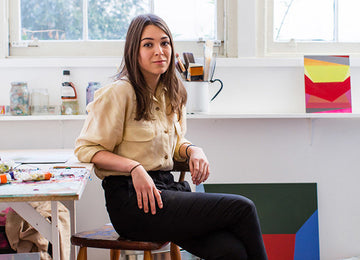The Bunai Collection has been inspired by the phenomenon of cellular fusion. Each piece tries to depict different cells moving and then fusing together to create a larger, whole organism. The cane weaving fuses with the marquina marble to transform two very different ideas into one, final product. Each piece of this collection has been hand-woven by master artisans who have been working with cane for most of their lives.
Cane weaving is one of the oldest and widest spread crafts in the world and most of these artisans specializing in weaving furniture. It is also a craft that is dying, forcing generations of families who have dedicated their lives to this art to look elsewhere for work. We spoke to one of the craftsman who worked on the Bunai Collection.
How long have you been weaving cane?
I’ve been doing this since I was five years old. When I was in school, they would teach us different crafts and I gravitated toward cane weaving.
How many generations of weavers are there in your family?
Weaving goes back over six generations in my family. Earlier, it was the primary source of income as we used to build furniture. Pieces like the Godrej Office Chair and Irani Café Chair became popular so we migrated to the city to satisfy the rising demand. With the introduction of plastic chairs, the demand for these kinds of products reduced and so we started looking at other application of our craft such as outdoor furniture and lampshades.

What were your influences while learning weaving? What do you see happening to this craft in the future?
My uncle, who was the primary craftsperson in our family, influenced me a lot. During my school years I had a lot of time to explore the craft and the potential it had in furniture and interior spaces; I used to help my uncle on his work sites. With the passing of the older generation, the craft dies with them as well.
As much as I respect the craft there is no more money here and I encouraged my own sons to go to college and pursue other careers. Education is more important for the future generations.

What are some of the things you struggle with in this industry?
I have to travel to Bareilly to get the cane. I buy it wholesale, get it cleaned, striped and processed for weaving. This entire process takes about 10 days and then you have to believe that you will be able to use the entire shipment of cane and make your money back.
People think cane is cheap and that cane weaving should be as well. In fact, it is an age-old art passed down through our parents and grandparents. It is a skilled craft but no one values it anymore and it is a struggle to make ends meet.
How do you feel about the pieces Josmo has been making?
I truly believe these pieces are very unique, both in form and in the approach itself. The use of woven cane on separate pieces does not deviate from the norm as such but the way they move together and the organic shape it creates is a language all on its own.

If this collection does well then that shows some appreciation for the craft as well. Weaving irregular shapes like this takes extra time and effort, had it been as simple square, it wouldn’t have been so challenging. We are breaking the design norm with these organic forms and I worked hard to make them look beautiful. It wasn’t easy but I think there is something to be said for working outside of the mold.

For me it is simple, I need to work and I need money to feed my family. The more work I get through projects like this, the better my life will be.
Do you think by applying cane weaving to new forms, your craft can be seen in a new way?
I think this aesthetic does have the potential to create a new segment, which combines materials like cane and metal and the look that has been created by joining each segment together, is really unique. I hope that this modern take on an ancient craft will help people understand how important this is to our country’s culture and livelihood and that cane can become a part of people’s homes again.

How do you feel when you weave?
For me it’s complete focus. All my attention is on what I am doing and it’s not just doing the job but doing it right. The continuous repetitive movements feel almost like saying the lord’s ‘jap’ (prayer bead chanting) and this creates its own harmony.
Although I love the craft, it cannot sustain me. Life is difficult, mera ghar ek din se dusre din tak chalta hain. My dream is to open up my own shop and have cane weaving be seen for the art that it is.





